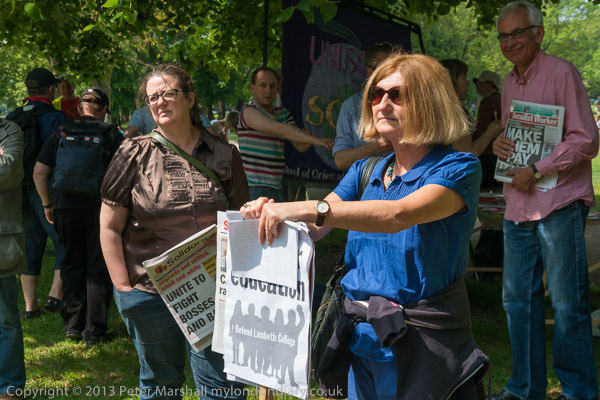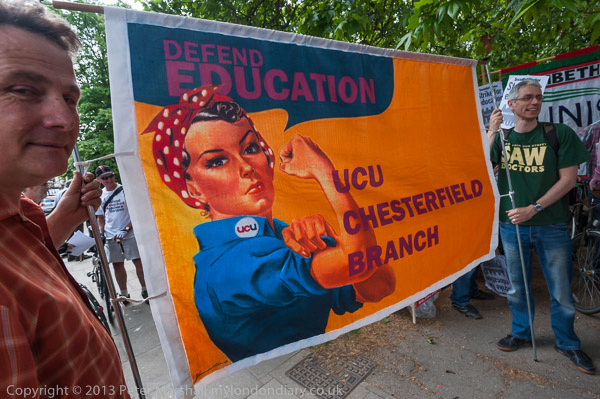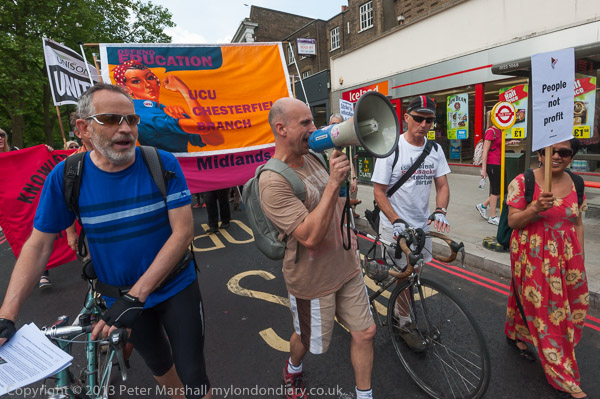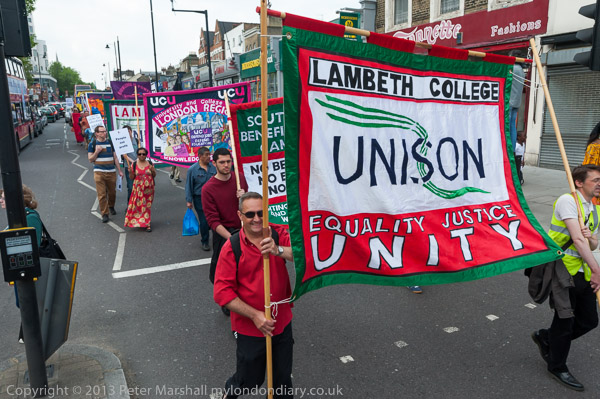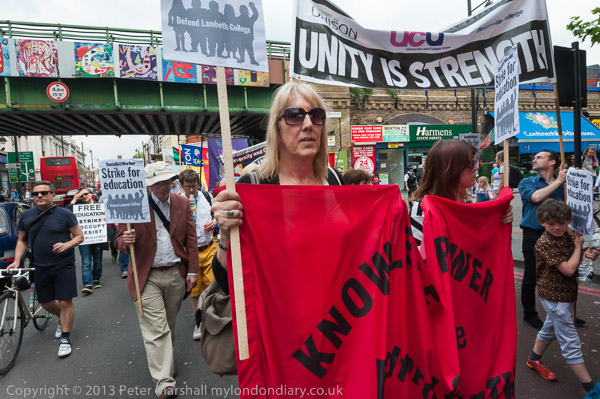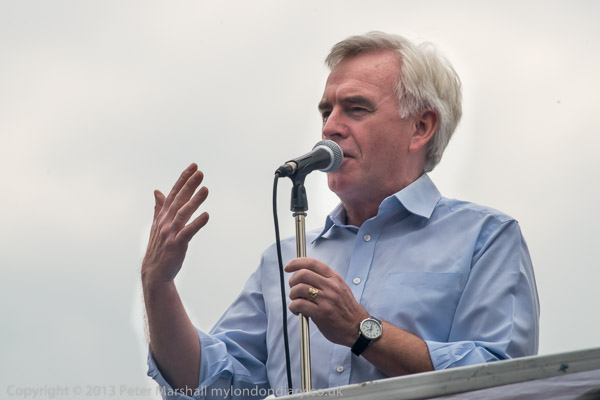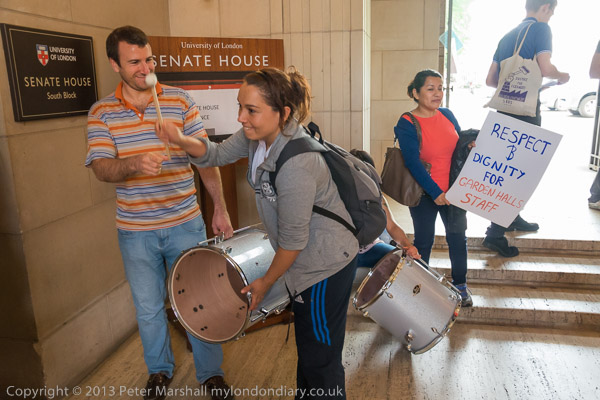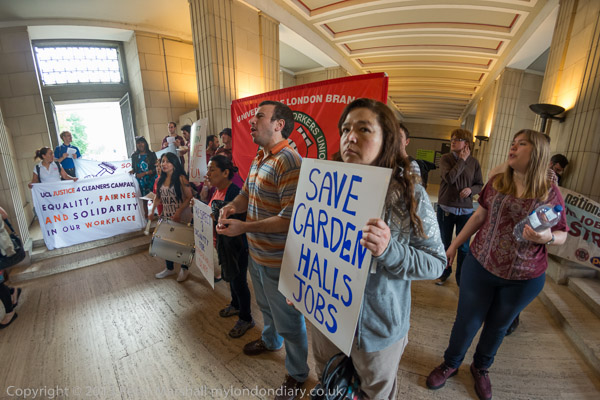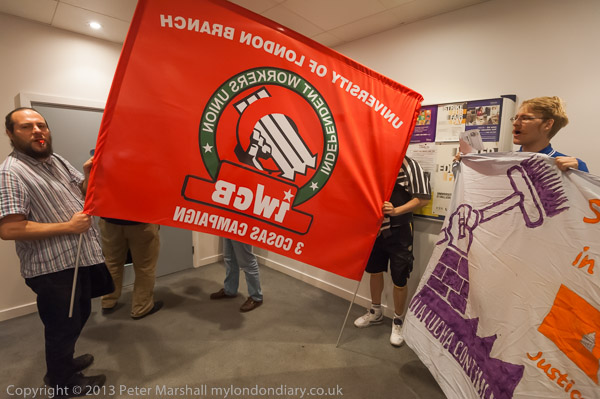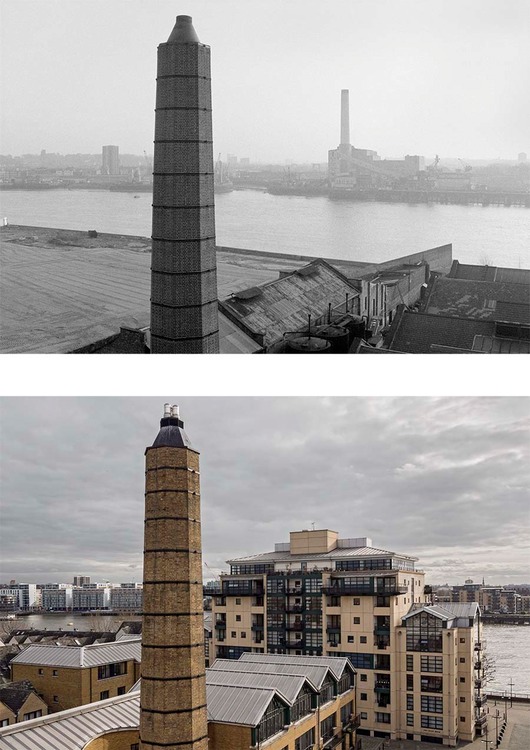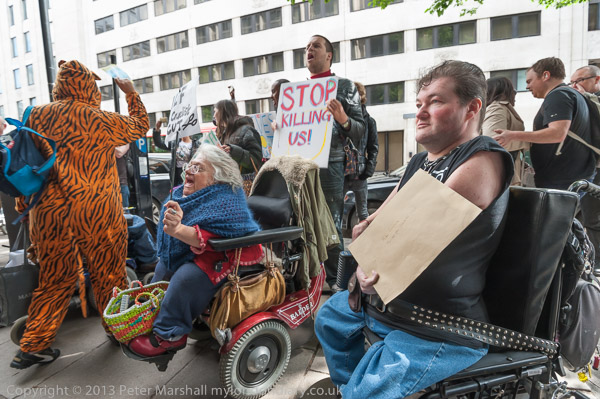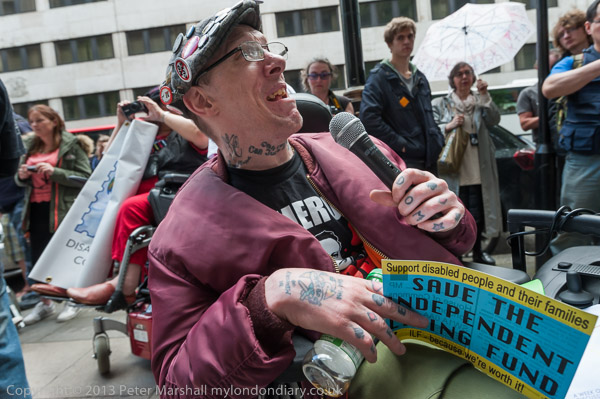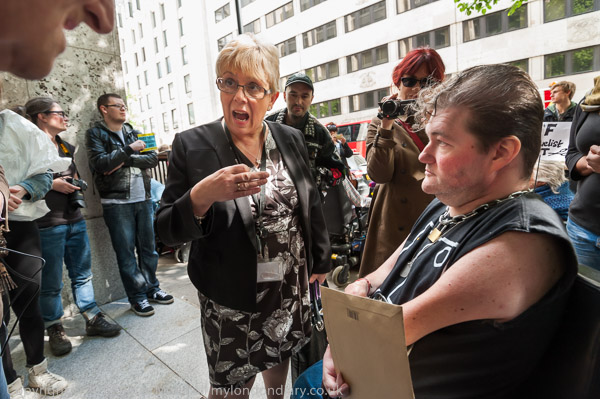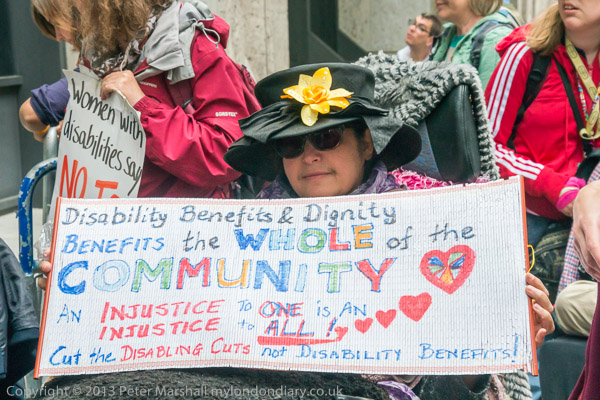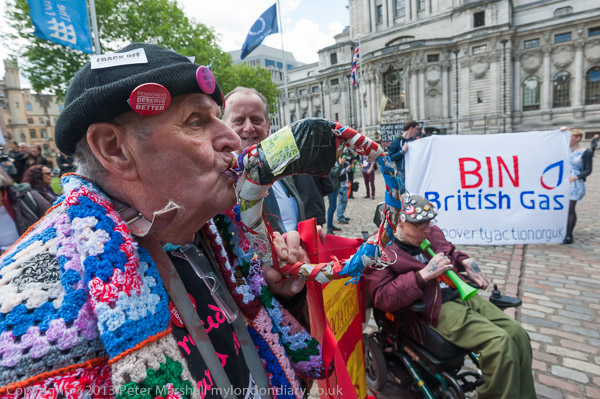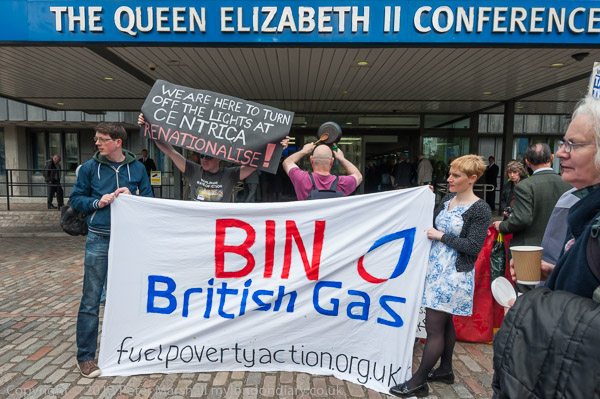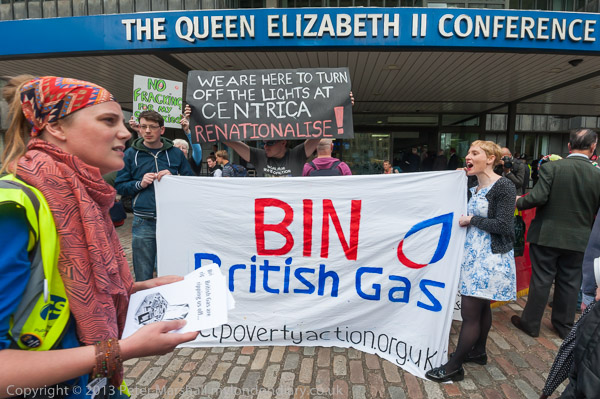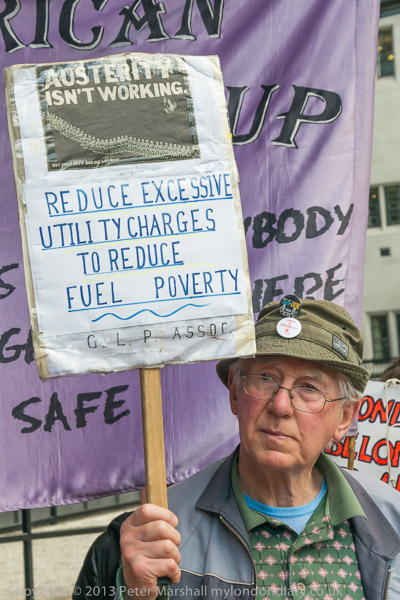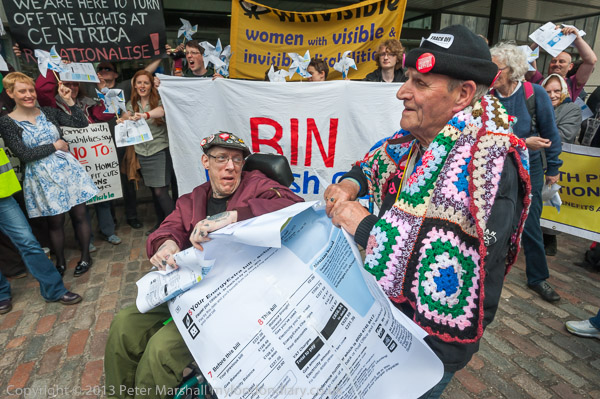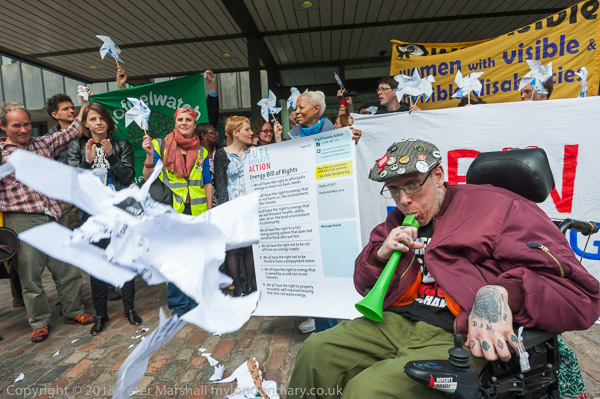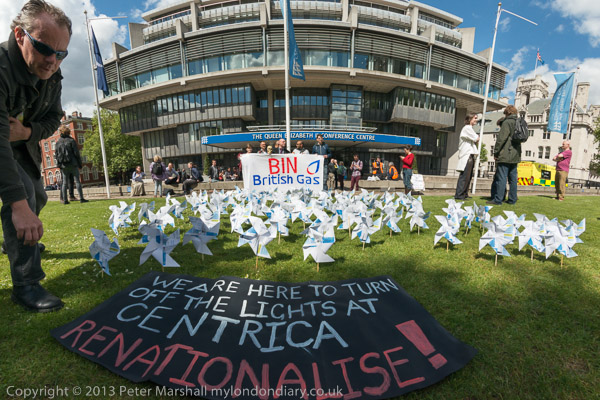May 14 happens to be my birthday, though I’ve had too many to make much of a fuss about it, and I still went out and took pictures. Though I didn’t start until around tea-time, having by then been out for an excellent birthday lunch with my wife at one of my favourite Indian restuarants. I was feeling pretty good after this, having consumed with it a large bottle of that ‘Indian’ less gassy lager brewed in Bedford (costing almost as much as my buffet meal.)
And it really was fine weather, warm and sunny but not too hot, and I was in a good mood, though just a littel disappointed when I arrived outside The Spectator offices where the protest was due to start dead on time to find nobody there.
It’s not unusual for me to turn up at protests and find they don’t happen, but today I was fairly certain that this one would take place, if just a little late. Rather than waiting on the street outside the offices I decided to head towards the nearest pub, where I arrived to find a small group of the protesters standing outside (the Romany flag was a giveaway), just about to leave for the protest. Rather than drink on my own – something I seldom do – I went with them.
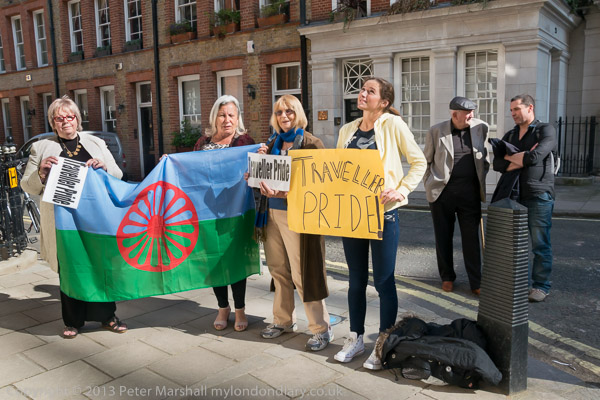
It was really good lighting, sun from the side, and the light walls of the offices around giving some natural fill so I didn’t need to use flash. The protesters were from the Traveller Movement, here to protest against the magazine’s publication of an article by Rod Little supporting the use of racist terms – the ‘g’ and ‘p’ words – to describe travellers, Roma and gypsies – more about this in Travellers protest Spectator’s racist language in My London Diary.
After the protesters had stood outside the offices for around a quarter of an hour, Spectator editor Fraser Nelson came out to greet them carrying a plate of chocolate cake and some serviettes. It was, he told them his birthday, and they had far more cake inside the office than they could eat, so would they like some. Although most of the protesters decided they didn’t want to eat his cake, I had no such problems, and told him it was my own birthday too, though I was a little older as I took a large slice. It was delicious, and came as an unexpected bonus. I can’t recall ever having been at a protest before where the person being protested against has offered cake.
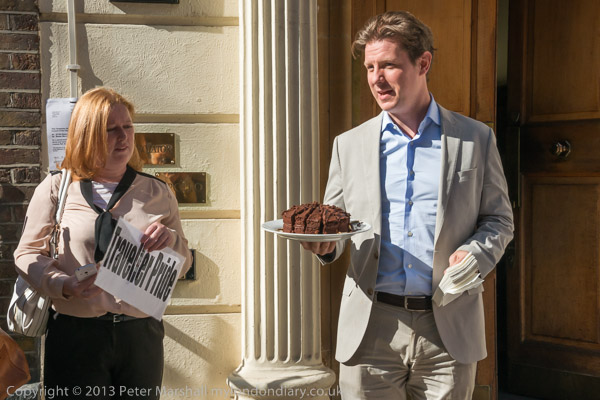
Not of course that cake makes his actions as an editor any more excusable. It is language that no reputable journalist would entertain, and certainly against the clear guidelines of my union, the NUJ, on the fair and accurate reporting of race relations subjects.
Soon after the protesters rang on the doorbell and went inside to deliver their letter of protest, and shortly after I left to catch a bus to the Ukranian embassy in Notting Hill. It was the evening rush hour, so the journey was slow, very slow. There are quite a lot of ‘bus lanes’ but these have a tendency to give out where they are most needed, and to be clogged by taxis elsewhere. Fortunately I was in no great hurry, and the top deck of a London bus is a good place from which to view the city, and just occasionally to take photographs from, though I don’t think I did so. Or at least, as so often, none that were worth keeping.
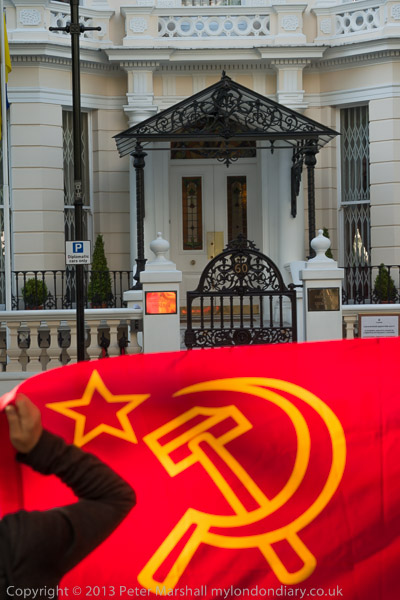
As I had anticipated, things were hardly starting by the time I arrived at the Ukrainian Embassy in the very posh backstreet of Holland Park. Although a Communist newspaper described the event the following day as a ‘siege‘, the protesters were actually standing rather peacefully on the opposite side of the road, making it difficult to really connect them with the embassy visually. It didn’t help either that the embassy’s blue and yellow flag was hanging limply in a thin line down its post.
After a few minutes, some of the protesters got out their banners, and I noticed that from a particular position one was reflected in the brass plate on the embassy gate. Having taken it from the other side of the road I tried to go closer to the gate and work with the reflection, but couldn’t get it work as I wanted – and while I was trying, a police car came and parked in the way, bringing the number of diplomatic officers present to two.
The protest had united various communist groups which generally have little in common other than their opposition to US imperialism, which they saw as behind a fascist coup in the Ukraine. The incident which sparked the protest was an attack on a protest camp and Trade Unions House in Odessa on May 2, when 42 people were killed and over 200 injured by Ukrainian neo-Nazis.
They see the current government in Ukraine as openly fascist and anti-democratic and call it a ‘Neo-Nazi junta‘, though this led to a problem with the chanting of slogans, with some factions supporting the Spanish pronunciation and others the fully anglicized version of junta, and argument that got just a little heated. Some too were unhappy at being photographed by the capitalist press – that is me, who regularly gets labelled as a ‘dirty commie’ by the right wing because of my membership of the NUJ.

Of course I took the usual pictures of people with banners and placards. I played a little with putting the hammer and sickle in the corner of too many of them, but I wasn’t really too pleased with the images and wanted something a little more striking.
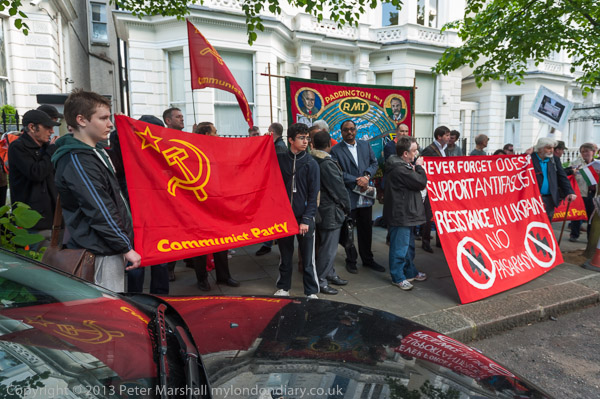
Eventually I think I found it, with the protest and its reflectioin in the windscreen and black bonnet of a parked car. I made a couple of frames and then moved away. It took a little care in printing to get the effect I had seen, but I rather like it.
I walked back along Holland Park towards the centre of London rather than to the closer bus stop I had come to, because I thought I would pay a visit to St Volodmyr, the patron saint of Ukraine and the king who converted the country to Christianity by decree a little over a thousand years ago. Around him now are flowers and photographs of the martyrs of the Maidan; some of them may have been fascists, but most were nationalists who wanted freedom in their country.
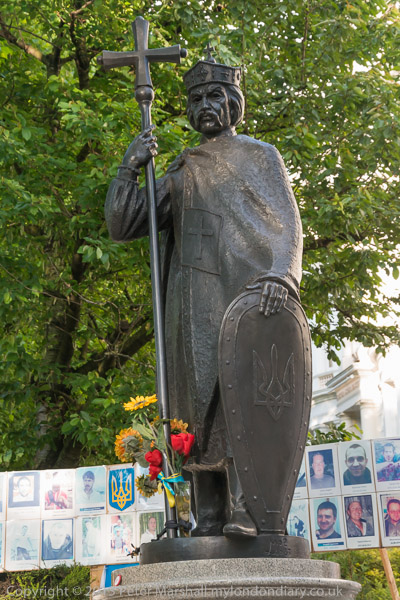
It was getting just a little dark, and I photographed the dark metal figure both with and without flash – as you can see in Communists & Anti-Fa protest Ukraine Massacres. The exposure above without flash has more interesting lighting and gives more detail in the statue. Flash on camera flattens the statue too much, though renders the flowers around the base of the statue in a wider view well.
It was time to go home, and to eat some of my own birthday cake after I’d blown out the candles.
Continue reading Birthday Events
